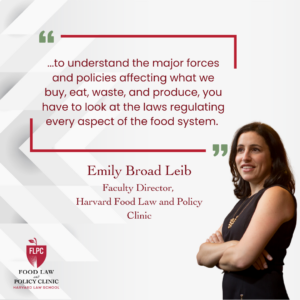Originally written by Christopher Cheney and published on Health Leaders Media on 4/12/22.
A new website provides information on Food is Medicine services across The Bay State.
KEY TAKEAWAYS
The Massachusetts Food is Medicine Service Inventory website features an interactive map that shows where programs are located across the state.
The service inventory website also has a search function that allows users to generate lists of programs based on criteria such as counties to identify service areas.
Studies have shown that Food is Medicine generates positive health outcomes and reduces healthcare costs.
The Massachusetts Food is Medicine Service Inventory website has been launched to connect individuals, healthcare providers, and community-based organizations to Food is Medicine services in their communities.
The service inventory website was created by Community Servings and the Center for Health Law and Policy Innovation (CHLPI) at Harvard Law School in Boston. “Diet quality is the Number One risk factor for death in the United States,” says Katie Garfield, JD, director of whole person care and clinical instructor at CHLPI.
The Massachusetts Food is Medicine Service Inventory has information on the four types of Food is Medicine interventions, which can be conceptualized as a pyramid.
1. Medically tailored meals: At the top of the pyramid are medically tailored meals, which are designed for individuals with the highest healthcare needs who need the most intensive intervention. Medically tailored meals are meals developed by a registered nutritionist to address the dietary needs of an individual’s medical condition, and individuals are referred by a healthcare provider or health plan.
2. Medically tailored food packages: The next category of nutrition intervention programs is slightly broader. Medically tailored food packages include a selection of minimally prepared grocery items selected by a registered nutritionist or other qualified nutrition professional as part of a treatment plan for an individual with a medical diagnosis. This is an intervention for someone who can shop and cook for themselves, but they have a specific medical diagnosis and nutrition needs, so they need some assistance in making sure that they are eating foods that benefit their health.
3. Nutritious food referrals: Instead of directly providing food, nutritious food referrals tend to provide funds for nutritious foods that may be redeemed in a variety of retail environments such as farmers markets or grocery stores. The most common example of a nutritious food referral is a produce prescription program, where a healthcare provider can refer a patient to programs that provide a voucher or gift card that is designed for the purchase of fruits and vegetables to address a health condition.
4. Community-level healthy food programs: The broadest category of Food is Medicine interventions is community-level healthy food programs. These programs provide nutritious food for a population that currently has or is at increased risk for chronic disease associated with food insecurity. These programs are done in partnership or consultation with a healthcare stakeholder such as a healthcare payer, provider, or nutrition professional. For example, there could be a mobile market that is providing healthy food at a community health center or another healthcare facility.
HOW THE MASSACHUSETTS FOOD IS MEDICINE SERVICE INVENTORY WORKS
Three years ago, CHLPI, Community Servings, and a range of other organizations across Massachusetts developed the Food is Medicine State Plan, and the service inventory is a fruit of that labor, Garfield says.
“As part of that effort, we surveyed more than two hundred organizations across Massachusetts and held 11 regional listening sessions across the state. Our goal was to understand what access to Food is Medicine interventions looked like, how that compared to the need, and what we could do to expand access. Through that process, a common theme that we heard was that healthcare providers and other organizations were interested in connecting patients to Food is Medicine interventions, but they did not know where to find them,” she says.
A key feature of the Massachusetts Food is Medicine Service Inventory is an interactive map, Garfield says. “The interactive map shows where programs exist across the state. You can click on an icon and see the contact information for programs and see where they are located.”
The website also provides a much more detailed searchable list of programs, she says.
“When you do a search, you get a list of programs meeting your criteria and detailed information on what those programs look like. For example, you can filter the list by what age groups the programs are serving, by the type of intervention based on the four types of Food is Medicine interventions, and by county to get a sense of service areas. When you click on a program, you get detailed information, including information on eligibility requirements, service areas, what health conditions the programs can be tailored to address, and the best way to get in contact with the program to see whether you can enroll,” Garfield says.
FOOD IS MEDICINE IMPACT
Food is Medicine has a positive effect on health outcomes, she says. “We are seeing some great research that shows Food is Medicine services, which include medically tailored meals, medically tailored food packages, and produce prescriptions, can make a big impact on improving diet and health. For example, studies have shown that connecting seriously ill patients to programs such as medically tailored meals can result in a huge drop in the need for hospital admissions and emergency department visits.”
Food is Medicine also drives down healthcare costs, Garfield says.
“Because food insecurity and diet quality are linked to chronic illness, they are important drivers of healthcare costs. For example, a Massachusetts study found that food insecurity increases healthcare costs in the state by $1.9 billion each year. … A recent study has shown that providing medically tailored meals can result in a 16% net reduction in healthcare costs—that is net, so it includes the cost of the meals. There is research that is forthcoming that is looking at the impact on healthcare costs for other Food is Medicine interventions,” she says.


Health Law & Policy, Commentary
Braidwood Management v. Becerra: Updated FAQs for Health Advocates and Providers
July 22, 2024